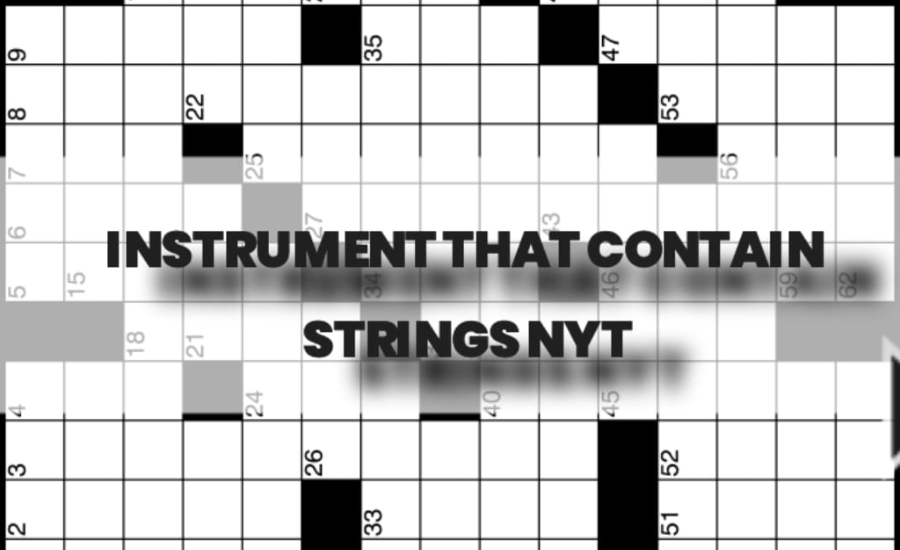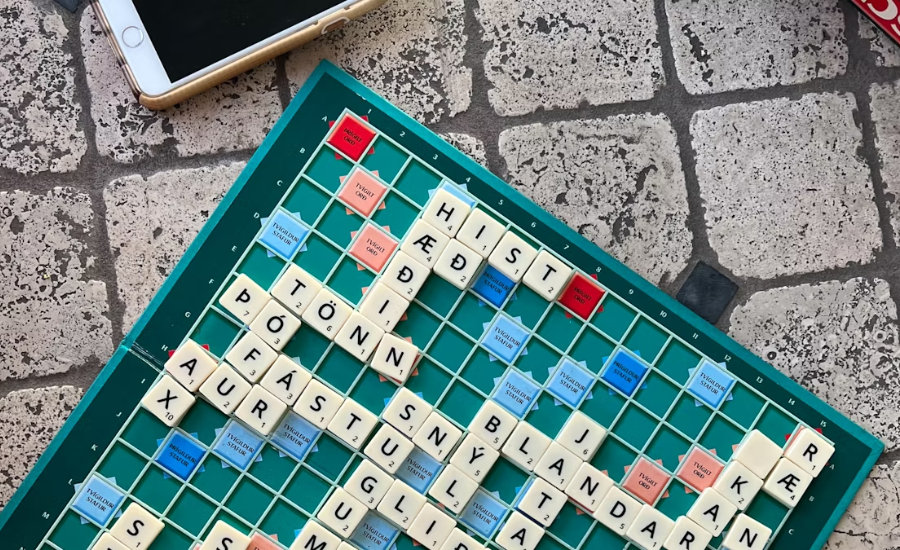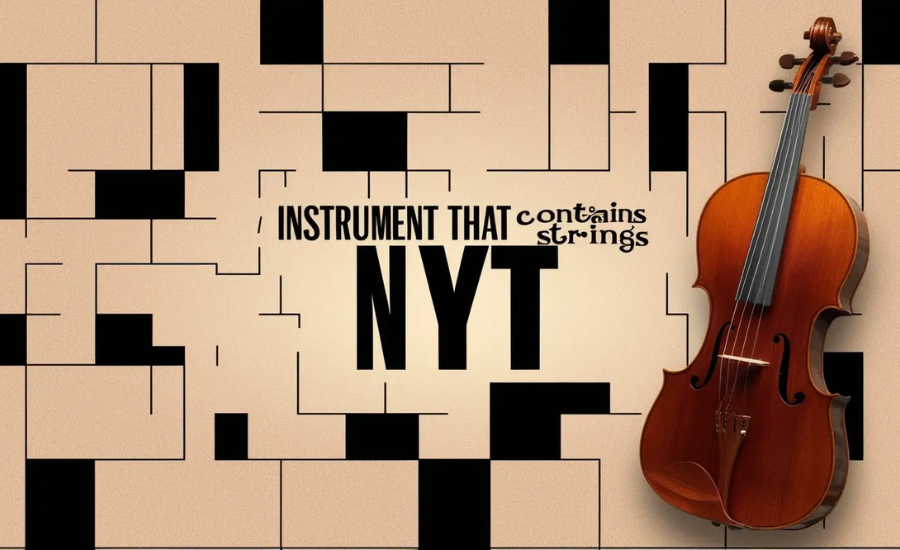For enthusiasts of wordplay and mental challenges, the New York Times crossword puzzle stands out as a classic favorite. This iconic pastime has captivated audiences for decades, appealing to both casual solvers and seasoned experts. Each day, solvers eagerly await the appearance of the distinctive black-and-white grid, brimming with intriguing clues and stimulating puzzles. There’s a unique satisfaction in deciphering even the toughest clues.
What Sets This puzzle Apart?
It might be its rich history or its ability to reflect contemporary culture. Completing the NYT crossword is a cherished activity for many, offering a mix of pleasure and occasional frustration. In this guide, we’ll delve into the intricacies of these puzzles, from deciphering clues to tackling specific challenges like “instrument that contains strings NYT.” Prepare to dive into the world of crosswords and uncover the secrets to solving them!
A Brief History Of The New York Times Crossword Puzzle

The New York Times crossword puzzle made its debut on February 15, 1942, as a modest feature in the Sunday newspaper. At that time, no one could have predicted that this small addition would become a cherished American tradition. Early puzzles, created by a few dedicated enthusiasts, were focused on simple themes and straightforward clues. As the popularity of crosswords grew, so did their complexity and sophistication.
By the 1960s, Arthur Wynne had transformed the format, introducing more intricate designs and inventive clues, including those like “instrument that contains strings,” which exemplify the evolving nature of the puzzles. His innovative approach set the stage for future creators, allowing for increasingly nuanced and challenging puzzles. Today, the New York Times crossword is celebrated for its depth and ingenuity, attracting millions of solvers with its blend of entertainment and intellectual challenge. The puzzles feature elaborate wordplay crafted by talented constructors from around the world, making each one a unique and engaging experience.
The Widespread Appeal Of The New York Times Crossword Puzzle
The New York Times crossword puzzle has captivated millions since its launch, drawing enthusiasts from diverse backgrounds with its daily challenges.
The puzzle’s allure stems from its blend of wit and wordplay. Solvers enjoy the satisfaction of deciphering intricate clues and discovering new knowledge in the process.
In recent years, digital platforms have broadened access to the puzzle, allowing players to engage via computers and smartphones. This shift has facilitated increased sharing and discussion on social media, further expanding its reach.
National Crossword Puzzle Day and similar events underscore the puzzle’s cultural importance and its place in our daily lives. Whether you’re a novice or an experienced solver, the New York Times crossword continues to provide both joy and intellectual stimulation to a global audience.
Deciphering Crossword Clues And Their Solutions
Initially, crossword puzzles may seem daunting, but mastering them largely depends on understanding their clues. Each clue is a piece of the puzzle, guiding you toward the correct answer.
Clues often incorporate wordplay, puns, or multiple meanings. For example, the clue “Instrument that Contains Strings Nyt” could refer to a ‘guitar’ or ‘violin,’ depending on the context.
Paying attention to letters from intersecting words can provide valuable hints about letter placements and thematic elements within the puzzle. Context is key in connecting clues with their answers.
Familiarity with common abbreviations and acronyms can also accelerate your solving process, as these frequently appear in puzzles.
As Pascal once said, “Practice makes perfect.” The more you engage with crosswords, the more adept you become at deciphering challenging clues. Embrace mistakes as part of the learning journey and enjoy the puzzle-solving experience.
Decoding Crossword Clues And Their Solutions

Crossword clues often challenge solvers with their clever wordplay, puns, and nuanced meanings. Understanding these clues requires recognizing subtle differences in wording and context.
Clues are typically categorized into several types: direct definitions, synonyms, and cryptic clues. For example, a straightforward clue like “capital of France” directly leads to the answer “Paris.” However, many clues demand more creative thinking and interpretation.
Context is crucial in solving clues, as many are tied to pop culture, current events, or specific knowledge. Familiarity with these references can greatly aid in solving puzzles.
Additionally, crosswords may incorporate abbreviations, acronyms, or foreign terms, adding layers of complexity. Mastering these elements can enhance your puzzle-solving skills and make the process more rewarding.
Deciphering The “Contains Strings” Clue In The NYT Crossword
The clue “Contains Strings” in the NYT Crossword pertains to musical instruments that produce sound through strings. Common examples fitting this description include the guitar and the violin, both of which are prominent in orchestras and bands and are known for their melodious sounds.
However, this clue can sometimes be more nuanced. It might refer to instruments like the harp or even electronic synthesizers, where string-like sounds are generated through a keyboard.
Crosswords often play with multiple meanings, making each clue an exercise in both knowledge and creativity. This dual nature of clues encourages solvers to think imaginatively while applying their existing knowledge.
Effective Strategies For Tackling Crossword Clues
When approaching crossword clues, keep in mind that wordplay is often a key element. Clue creators frequently use puns and double meanings to challenge solvers.
Pay close attention to letter patterns within the puzzle. If some letters are already filled in, think about potential words that fit those letters. This method can help you uncover additional answers.
Don’t overlook abbreviations and acronyms, as they are commonly used in crosswords and can significantly narrow down your options.
Consider the length of the answer required for each clue. This can help you refine your guesses and find the right solution.
If you find yourself stuck, taking a short break might be beneficial. Sometimes stepping away from the puzzle allows you to return with a fresh perspective and new ideas.
Grasping The “Instrument That Contains Strings” Crossword Clue
When you encounter the clue “Instrument that Contains Strings” in a crossword puzzle, it naturally brings to mind various stringed musical instruments. Although this may seem straightforward, finding the correct answer can be challenging for many solvers.
The most frequent solution for this clue is “guitar.” This six-letter word fits perfectly, as guitars are well-known string instruments found across various musical genres.
To solve this type of clue, start by considering the broader category of string instruments, which includes violins, harps, and ukuleles. However, the term “guitar” is often the most familiar and commonly used in everyday contexts.
To narrow down your choices effectively, leverage your general knowledge and associations with string instruments. Understanding how these instruments are commonly perceived can help you tackle multiple clues with greater ease.
Incorporating The “Instrument That Contains Strings” Clue Into The Puzzle’s Theme
The clue “Instrument that Contains Strings” often prompts solvers to think about various stringed musical instruments. Typically, the answer “Guitar” fits seamlessly within the structure of the crossword puzzle.
Crossword puzzles frequently feature overarching themes that tie the clues together. In this instance, the clue might be linked to other music-related or artistic entries, enhancing the thematic unity of the puzzle and making the solving process more engaging.
Additionally, clues related to musical instruments might intersect with terms such as notes, scales, or famous musicians, adding an extra layer of depth to the puzzle. These thematic connections not only enrich individual answers but also offer a more cohesive solving experience for those who appreciate a well-structured theme.
Understanding how each clue contributes to the overall theme is a key strategy in crossword solving. Recognizing these connections can help solvers navigate the puzzle more efficiently, as they leverage the interrelated hints to fill in answers with greater ease.
Effective Strategies For Tackling NYT Crossword Puzzles

- Begin with Simple Clues: Start by tackling the more straightforward clues first. Completing these easier answers can build your confidence and create a foundation for solving the more challenging parts of the puzzle.
- Familiarize Yourself with Common Abbreviations and Themes: Understanding frequently used abbreviations and recurring themes in NYT crosswords can significantly expedite your solving process. This knowledge allows you to quickly decipher clues and fit answers into the grid.
- Utilize Fill-in-the-Blank Clues: These clues often provide direct answers that can help you fill in multiple adjacent squares simultaneously. They can be especially useful in progressing through the puzzle.
- Don’t Hesitate to Make an Educated Guess: If you’re unsure about a clue, don’t be afraid to jot down your best guess. Sometimes, filling in a tentative answer can reveal new insights and help you move forward with the puzzle.
- Be Aware of Wordplay and Puns: Many crossword clues involve clever wordplay or puns that are designed to be misleading. Pay close attention to the language used in clues to uncover the intended meanings and solve the puzzle more effectively.
Recognizing Patterns And Techniques In NYT Crosswords
New York Times crossword puzzles are known for their distinctive patterns and solving techniques. Familiarity with these can enhance the enjoyment and efficiency of solving them.
- Wordplay and Puns: Many clues use clever wordplay, including puns and homophones, requiring a creative approach. For instance, the clue “a place to catch some rays” might refer to the “beach” rather than literal sunlight.
- Frequent Abbreviations: Abbreviations for states, days of the week, and other common terms frequently appear in puzzles. Knowing these abbreviations can help quickly solve clues where they are used.
- Fill-in-the-Blank Clues: These clues are often straightforward and can serve as useful anchors within the puzzle grid. They provide direct answers that can help fill in surrounding squares.
- Letter Repetitions: Repeated letters across intersecting words can suggest connections between answers. Recognizing these patterns can assist in solving linked clues and advancing through the puzzle more smoothly.
Tackling Challenging Or Unfamiliar Clues
Encountering challenging or unfamiliar clues in a crossword puzzle can be daunting, but it also offers a chance to enhance your solving skills. Here’s how to effectively approach these tricky clues:
- Break Down the Clue: Analyze the clue by dividing it into smaller components. Identify key terms or phrases that might hint at the answer. This approach can help clarify what the clue is asking for.
- Explore Synonyms and Related Terms: If a clue is ambiguous, think of synonyms or related words that align with the puzzle’s theme. This can provide a different perspective and help in finding the correct answer.
- Leverage Puzzle Context: Use the context provided by the surrounding clues and overall theme of the puzzle. This can offer valuable insights and assist in narrowing down possible answers.
- Stay Positive and Persistent: Approach each challenging clue with a positive attitude. Every difficult clue you solve improves your skills and prepares you for future puzzles. Enjoy the process and use each experience to build your expertise.
Enhancing Your Crossword Puzzle Skills: Key Resources
Improving your crossword puzzle skills can be both enjoyable and rewarding. Here are some valuable resources and strategies to help you advance:
- Puzzle Books: Investing time in specialized crossword puzzle books can be highly beneficial. These books offer a range of puzzles that cater to different skill levels and provide practice to enhance your solving abilities.
- Online Tools and Platforms: Utilize online resources such as Crossword Nexus, which offers various tools for clue-finding and solving. Additionally, engaging with forums like Rex Parker’s blog allows you to connect with other crossword enthusiasts, share insights, and receive valuable tips.
- Mobile Applications: Mobile apps can be a convenient way to practice crosswords on the go. The New York Times Crossword app, for instance, is popular for its daily puzzles that range in difficulty, offering continuous opportunities for improvement.
- Competitions and Tournaments: Participating in local or online crossword tournaments can significantly enhance your skills. Competing against other solvers exposes you to different strategies and approaches, enriching your solving techniques and broadening your understanding of clues.
Books And App To Enhance Your Crossword Puzzle Skills
Sharpening your crossword puzzle skills can be both a rewarding and enjoyable experience. A variety of resources are available to help you improve your techniques and get more out of your puzzle-solving endeavors:
- Books: Consider exploring books dedicated to crossword puzzles. For example, “The Crossword Dictionary” provides an extensive list of entries and useful tips for deciphering clues. Another excellent resource is “How to Solve the New York Times Crossword Puzzle” by Will Shortz, which offers insider advice from the renowned crossword editor.
- Online Resources: Websites such as NYTimes.com offer daily crossword puzzles with helpful hints and detailed explanations of answers. These platforms are ideal for practicing and honing your skills with new challenges.
- Mobile Apps: For those who prefer practicing on the go, mobile apps like “Crossword Solver” and “Word Cross” are highly recommended. These apps cater to various skill levels and even include social features that allow you to compete with friends, adding a fun and interactive element to your practice.
FAQs
Q: How frequently is the New York Times Crossword Puzzle published?
A: The New York Times Crossword Puzzle is released daily, with a new puzzle appearing every day of the week. The difficulty typically ramps up through the week, with the most challenging puzzle featured on Sunday.
Q: Who is responsible for creating the New York Times Crossword Puzzles?
A: The puzzles are created by a diverse group of constructors, ranging from seasoned professionals to emerging talents. Will Short, who has served as the crossword editor since 1993, oversees the puzzle content.
Q: Can I access the New York Times Crossword Puzzle online?
A: Yes, you can find the New York Times Crossword Puzzle online through both the New York Times website and its mobile app. Subscribers have access to daily puzzles as well as an archive of previous puzzles.
Q: What are some strategies for tackling difficult crossword clues?
A: When dealing with tough clues, try breaking them into smaller segments, finding synonyms, and using the context from intersecting answers. Familiarity with common abbreviations and puzzle themes can also be beneficial.
Q: What resources can help me improve my crossword-solving skills?
A: To enhance your crossword skills, consider using specialized puzzle books, online tools like Crossword Nexus, and mobile apps dedicated to crosswords. Joining crossword competitions can also provide valuable practice.
Q: Is it possible to submit my own crossword puzzles to the New York Times?
A: Yes, the New York Times accepts submissions from aspiring puzzle creators. Submission guidelines are available on their website, and all puzzles are evaluated by the editorial team.
Q: What role do themed puzzles play in the New York Times Crossword?
A: Themed puzzles feature a central concept or idea that connects the clues and answers. This theme adds context and makes the solving experience more engaging and enjoyable.
Q: How can I start solving the New York Times Crossword Puzzle?
A: Begin with simpler clues to build confidence, then move on to more challenging ones. Get familiar with common crossword patterns and solve puzzles regularly to improve your skills.
Q: Are there ways to get hints for the New York Times Crossword Puzzle?
A: Yes, some online platforms and mobile apps offer hints or assistance. Additionally, crossword enthusiasts often share tips and solutions on forums and blogs, which can help if you’re stuck.
Q: How has the New York Times Crossword Puzzle changed over the years?
A: Since its inception in 1942, the New York Times Crossword Puzzle has evolved from straightforward clues to more intricate and creative puzzles. The format now features diverse themes, innovative clues, and varying levels of difficulty.
Conclusion
The New York Times Crossword Puzzle is more than just a daily challenge; it has become a cherished cultural staple, evolving to engage solvers of all skill levels. Its rich history and clever clues, such as “instrument that contains strings,” highlight the creative and broad knowledge required. Tackling both simple and complex clues offers opportunities to enhance your skills. By using resources like puzzle books, online tools, and apps, and participating in competitions, you can further develop your abilities. The puzzle provides intellectual stimulation and daily enjoyment—embrace the challenge and keep exploring the fascinating world of crosswords!
Stay in touch for more updates and alerts visit : Globe and Mails!
